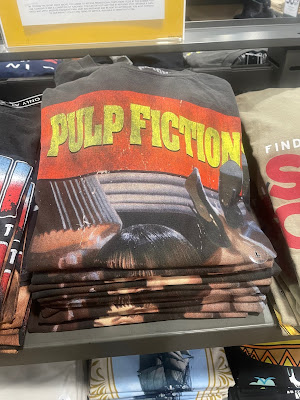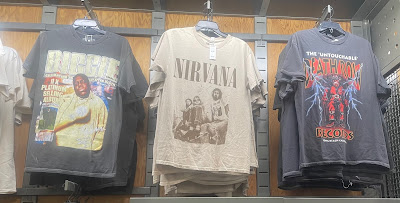November 28, 2023
How Today's Teenagers Are Embracing Nirvana and Other 90's Pop Culture
November 18, 2023
Matthew Perry was Beloved by All -- but his Untimely Death Hits Gen X-ers the Hardest
Matthew Perry's recent, sudden death sparked an outpouring of grief and fond remembrances within the Hollywood community. It also brought a great deal of sadness to fans of the actor and just about anyone who's ever watched and loved him on television. Perry's talent extended far beyond a single TV show (I first noticed him in a guest shot he did on Just the Ten of Us in 1989 and also thoroughly enjoyed him opposite Salma Hayek in 1997's Fools Rush In.) Still, the actor will always be most remembered most as hilarious smart-aleck Chandler Bing on Friends. And therein lies the reason why Perry's death is especially painful for those of us in Generation X. It's because Friends is undeniably a Gen X show.
In Friends first season (1994) we learn that Monica (and her high school classmate Rachel) are twenty-six years old. The rest of the gang is also right around this same age, with Ross (and possibly Phoebe) only slightly older. So when you do the math, Monica was born in 1968, placing her and the rest of the Friends squarely in Generation X. Numerous storylines and references throughout the series back this up. From Ross's fixation on Princess Leia in Return of the Jedi, to Chandler's Flock of Seagulls haircut and admission of rushing the stage at a Wham concert, clearly these characters grew up in the 80's and thus are unquestionably part of Generation X. That clarified, it's no wonder that Perry's death hits us the hardest. We've lost one of our own.
My high school class recently had a well-attended reunion and though I wasn't able to make it, I took time to pour over the gallery of photos that were posted online in the days after. While clicking through, I smiled and laughed seeing faces from my past for the first time in literally decades. The funny thing was I wasn't even friends with most of these people. I made all of my lifelong friendships during college and to this day remain in touch with only a single high school pal. Nevertheless it warmed my heart to see people I spent four of my most formative years with and know, despite the abundance of receding hairlines and expanding waistlines, they were alive and doing well. Somehow, we all tend to have very strong sentiments towards our peers and those with whom we've shared a common, significant experience. But the flipside of that feel-good sentiment is the gut-punch and sense of loss we suffer when we learn that one of our comrades is now gone.
That's what many of us are feeling with Matthew Perry's death. Friends was the ongoing story of six Gen X-ers trying to make it in the world as they laughed with, leaned on and loved each other. As we did with the abundance of teen movies in the 1980's (e.g., The Breakfast Club, Fast Times, Risky Business) Gen X-ers saw authentic versions of themselves and their lives in the Friends characters -- whether it was Ross (smart and sensitive and carrying unrequited love) or Phoebe (so unapologetically authentic in her flakiness) or Chandler, with his rapier wit and brandishing sarcasm hiding underlying insecurities.
Many will say that Friends is a show that belongs to far more that just a single generation and that it appeals to Millennials and Zoomers as much as any other age group. This is certainly true. Enough time has gone by now that we can safely say that Friends, and many of it's themes, storylines and characters are classic. Nevertheless, the show provided a different experience for us Gen X-ers who tuned in during its original run. We were watching ourselves -- young adults in their mid-20's, living post-college life in the 90's, going through the same things we were at that same moment in time. For example, when Friends debuted, many Gen-X women (my girlfriend included) had just moved out of their parents' house, started their first real job and were realizing independence for the very first time -- just like Rachel in the pilot episode. Like Joey, many of us were pursuing a career in acting or the arts and working odd jobs to pay rent while we pursued our dream. And while young people watching the show for the first time even today can definitely relate to universal themes like this, at the time it originally aired Friends meant the most to Gen-Xers who got to come home, click on the TV and see Ross, Rachel, Monica, Phoebe, Joey and Chandler living their same lives -- or perhaps the lives we wished we had. These were our peers... our contemporaries... our cohorts. And losing one of those is often the hardest blow to take...
R.I.P. Matthew.






